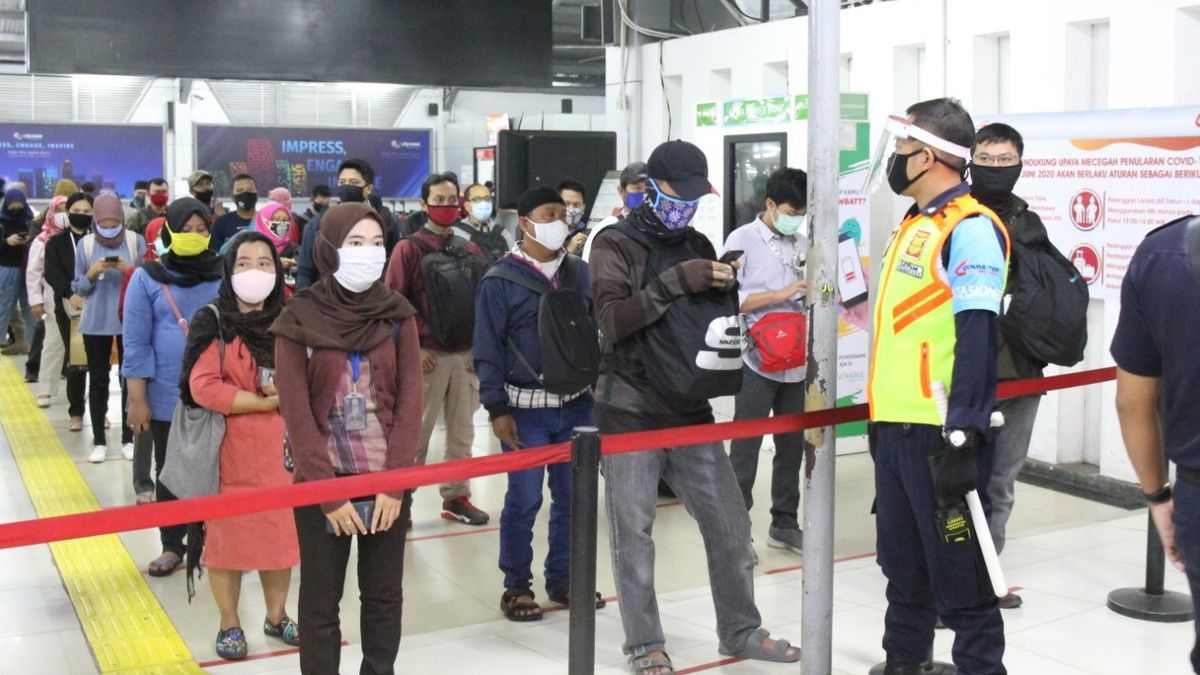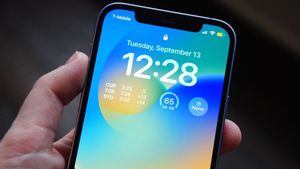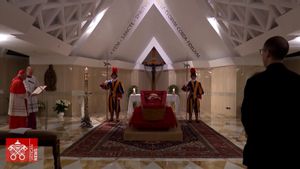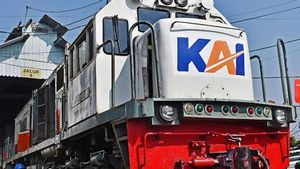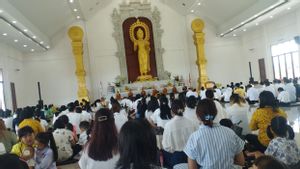JAKARTA - Circular Number 8 of 2020 regarding the regulation of work hours for people in the Jabodetabek area is expected to be able to break the density of public transportation users, especially commuter lines. However, University of Indonesia public policy researcher Defny Holidin disagrees on this matter.
Even though he said it was the right thing to do to regulate work hours, he did not believe this division would reduce the density of public transportation users.
"I agree, but actually this shift distribution is not very effective if it is related to the density of commuter line transportation," Defny told VOI via text message, Monday, June 15.
According to him, the density of transportation is something that cannot be avoided. This is because the community has returned to their activities even though the outbreak of COVID-19 is still happening and the number of cases is increasing.
This shif regulation policy was made because the government has decided to enter into a new normal phase. Meanwhile, according to him, the new normality policy seemed ambiguous.
"There is a tendency for people to fill their off time with other activities that are likely to use mass transportation to the location of the activity," he said.
Instead of being able to control congestion in public transportation, said Defny, this circular is considered to be more effective in reducing congestion in the workplace.
"This shift division is more effective in reducing the density at work sites or activities in work units. But it is not quite right (reducing the density on public transportation), because there will be many uncontrolled variables in suppressing the activity patterns of individuals in the new normal phase," he said.
Previously, Spokesperson for COVID-19 Handling Achmad Yurianto (Yuri) said this circular contained rules for all institutions that employ state civil servants (ASN), BUMN employees, and private employees to share working hours.
"The first phase or the first wave, will start work at 07.00 WIB until 07.30 WIB. It is hoped that, with eight hours of work, workers will end their work at 15.00 WIB-15.30 WIB," said Yurianto in a press conference broadcast on the BNPB YouTube account, Sunday, June 14th.
Furthermore, workers who enter stage two will start working between 10.00 WIB and 10.30 WIB and will finish working at around 18.00 WIB to 18.30 WIB.
According to Yurianto, this was done in order to maintain the implementation of health protocols in public transportation. Moreover, workers who live in the Jabodetabek area use a lot of public transportation, especially the commuter line.
He said, as many as 75 percent of commuter line passengers were workers such as ASN, BUMN employees, and private employees. These workers, continued Yuri, mostly moved simultaneously in the morning at around 05.30 WIB every day.
"If we pay attention, the movement is almost 45 percent of them moving together around 05.30 WIB to 06.30 WIB. This is what will then be difficult for us to be able to maintain physical distancing. Because the capacity possessed by this mode of transportation, for example, the commuter line has been maximally prepared. "said Yurianto.
If not anticipated, the density in public transportation will have an impact on health, including being able to transmit the virus.
Although Yurianto stated that this circular letter would take effect on Monday, June 15, in reality, queues still occurred at the commuter line stations a few days earlier.
In fact, according to data from PT Kereta Commuter Indonesia (KCI), the number of passengers using this public transportation mode increased by 12 percent from the previous week.
"Until 11.00 WIB, there were 160,946 users who tap-in at the entrances of all KRL stations," said VP Corporate Communications of PT KCI Anne Purba in a written statement, Monday, June 15.
Even though there were queues of users at the station, continued Anne, commuter line service users were now more orderly in following the health protocols that were in effect during the COVID-19 period.
This seems to be done by commuter line users at Bogor Station. He said, until 11.00 WIB, the number of passengers using the electric train service from this station reached 12,437 people, an increase of 4 percent.
"Users queue up to the hallway from the station parking area. The queue is orderly, flowing, and users always follow the signs and directions of officers to maintain their distance," he said.
Anne said, the peak of passenger density occurred in the morning. So, the officials then made arrangements at the station entrance with the aim of preventing queues. As a result, each passenger only needed to queue for an average of under 30 minutes.
This queue did not only occur at Bogor Station, but also occurred at a number of other stations such as Cilebut Station, Bojonggede Station, and Rangkabitung. However, officers have tried to maximize this queue by creating a queuing zone scheme and adding markers at stations.
To reduce congestion, prospective passengers at Bogor Station, Cilebut Station, Bojonggede Station, Tambun Station, and Cikarang Station can take advantage of free buses prepared by the DKI Jakarta Provincial Government and the Jabodetabek Transportation Management Agency (BPTJ) of the Ministry of Transportation.
"The presence of this bus is an alternative mode of transportation from these stations to a number of locations in Jakarta. In total there are dozens of buses to Jakarta for departures from 05.30 WIB to 07.30 WIB," he concluded.
The English, Chinese, Japanese, Arabic, and French versions are automatically generated by the AI. So there may still be inaccuracies in translating, please always see Indonesian as our main language. (system supported by DigitalSiber.id)
